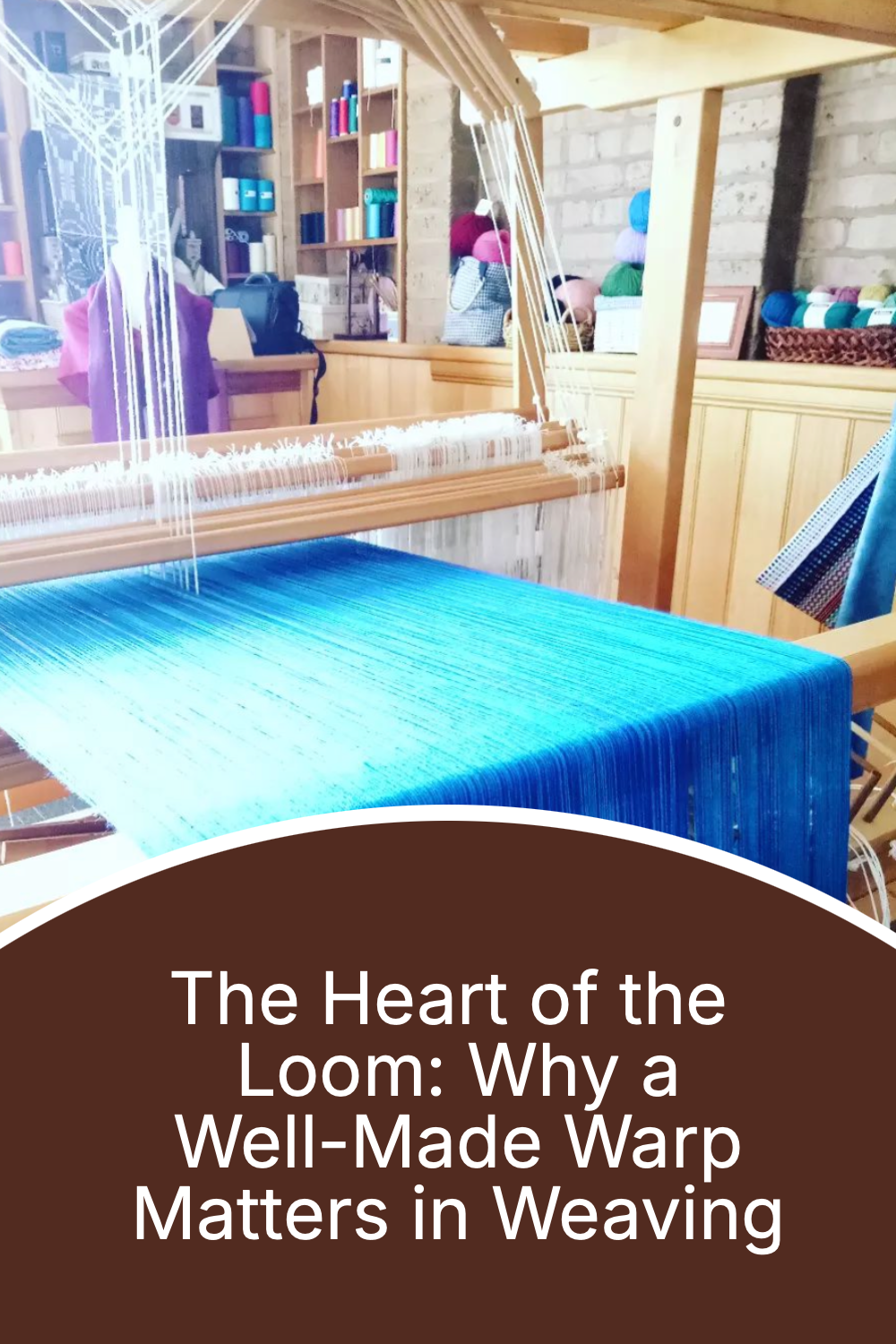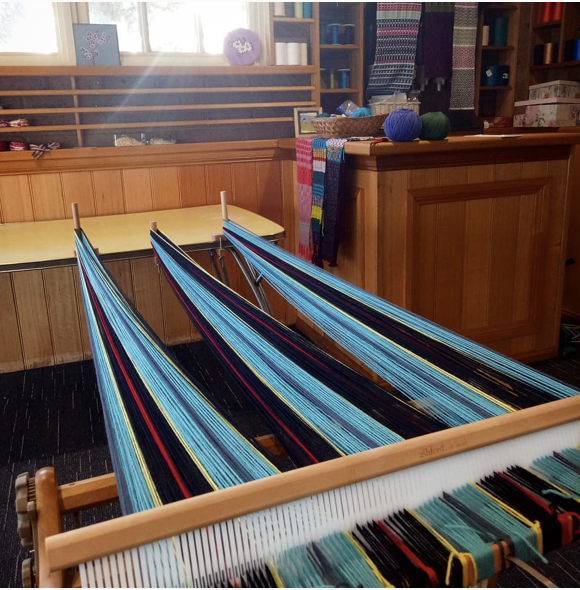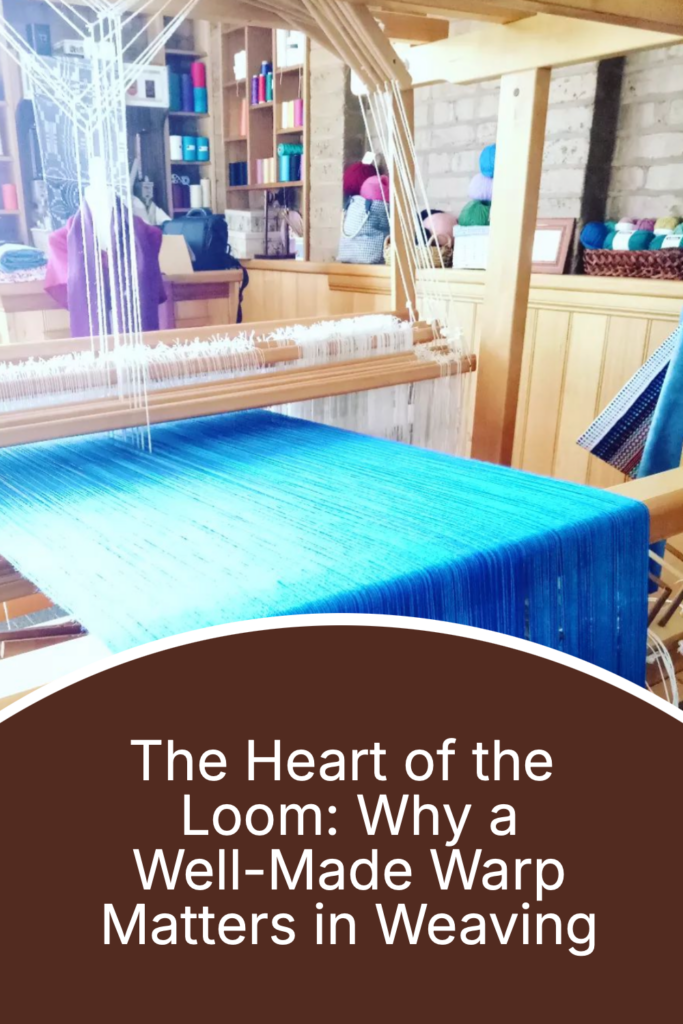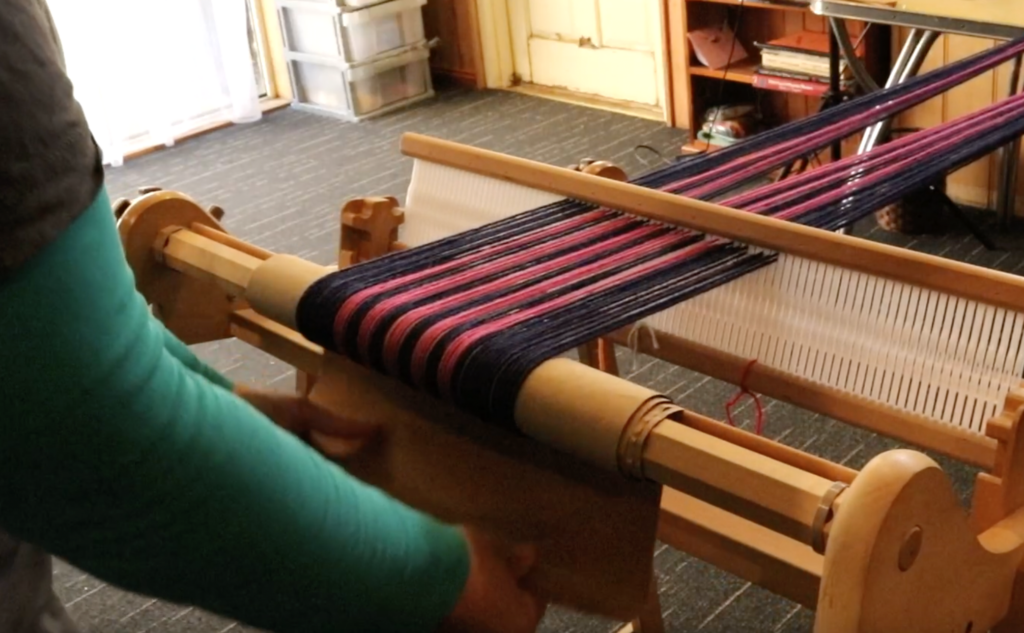Ask any weaver about their least favorite part of the process, and many will answer without hesitation: “warping the loom!”
Warping is often seen as tedious, complicated, and fraught with potential for mistakes.
But for me, warping is an essential and satisfying step in the weaving process, the foundation on which every weaving project depends. A well-made warp sets the tone for a successful and joyful weaving experience.
I remember saying to my husband one time, when I had just finished warping my Louet David Floor Loom. “That was my best warp yet. It went on like butter!”
That was a very happy day for me and a milestone reached. I realised that day that all the practice I had put in had been worth it. I felt completely relaxed and at ease during the whole warping process.
Whether you weave on a rigid heddle loom, a table loom, a floor loom or another type of loom, I hope the tips in this article will help you turn your warping experience around.
The Warp: Backbone of the Weave
In weaving, the warp is the series of threads stretched lengthwise on the loom, held under tension to provide the structure for weaving the weft threads. It’s not just a technical necessity; it’s the backbone of every design, ensuring stability and evenness in the final fabric. A poorly prepared warp can lead to uneven tension, broken threads, and frustration at every turn.
When done correctly, however, a good warp creates harmony. Every thread is aligned, tensioned evenly, and ready to support the creative process that follows. It’s like tuning a musical instrument; the preparation determines the quality of the performance. It can make all the difference between a happy and successful project or a frustrating and unfulfilling project.
Why Warping Matters
Warping isn’t just a step in the weaving process—it’s an act of care, discipline and skill. Here’s why I believe warping deserves respect, not dread:
- Foundation of Success: Just as a sturdy foundation supports a house, a well-warped loom supports a beautiful and functional fabric.
- Opportunity for Design: Warping isn’t just a chore; it’s a chance to engage deeply with your design. The choice of colors, fiber types, and spacing happens here, laying the groundwork for your creative vision.
- Mindful Preparation: Warping slows you down. It requires attention, precision, and patience – qualities which are actually character building!
- Fewer Problems Later: An hour spent carefully warping your loom can save countless hours of untangling, retying, and troubleshooting during the weaving process.
Finding Joy in Warping
So, how do you shift your mindset and embrace the joy of warping?
- Create a routine: Set aside dedicated time for warping in a space that feels peaceful. Play music or light a candle to make it an enjoyable experience.
- Invest in Tools: Good tools can make all the difference. A warping board, sturdy loom, and the right yarn are worth the investment to make warping more efficient and less frustrating.
- Learn Techniques: Experiment with different warping methods until you find one that works for you. Whether you use a direct warping peg, a warping board, sectional beaming or something else, mastering your preferred method can boost confidence and ease.
- Celebrate the Process: Remember, every part of weaving contributes to the whole. Warping isn’t just a means to an end; it’s an integral step that can result in deep satisfaction.
The Heart of Your Weaving
For me, there’s a special satisfaction in finishing a warp and seeing the loom ready for weaving. It’s a moment of anticipation, knowing that all the preparation will pay off in smooth, rhythmic weaving.
So, the next time you’re about to warp your loom, pause for a moment. Consider the care and craftsmanship you’re about to invest in your project. Embrace the process, and you might just find that warping becomes one of your favourite parts of weaving.
Or at the very least, it can become a less dreaded part of the process for you!
Because warping is such an important part of weaving, I have resources to help you to warp better:
2 tips for rigid heddle warping…
Strategies for better warping…
Plus I have a Youtube playlist specifically for learning more about warping.
Until next time…
Happy Weaving!





Leave a Reply